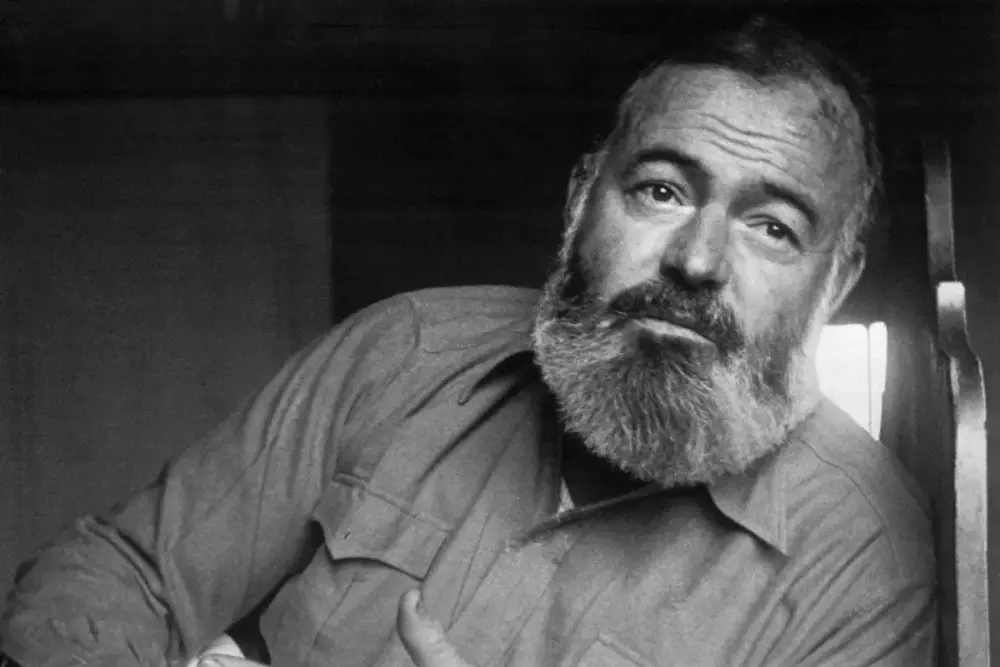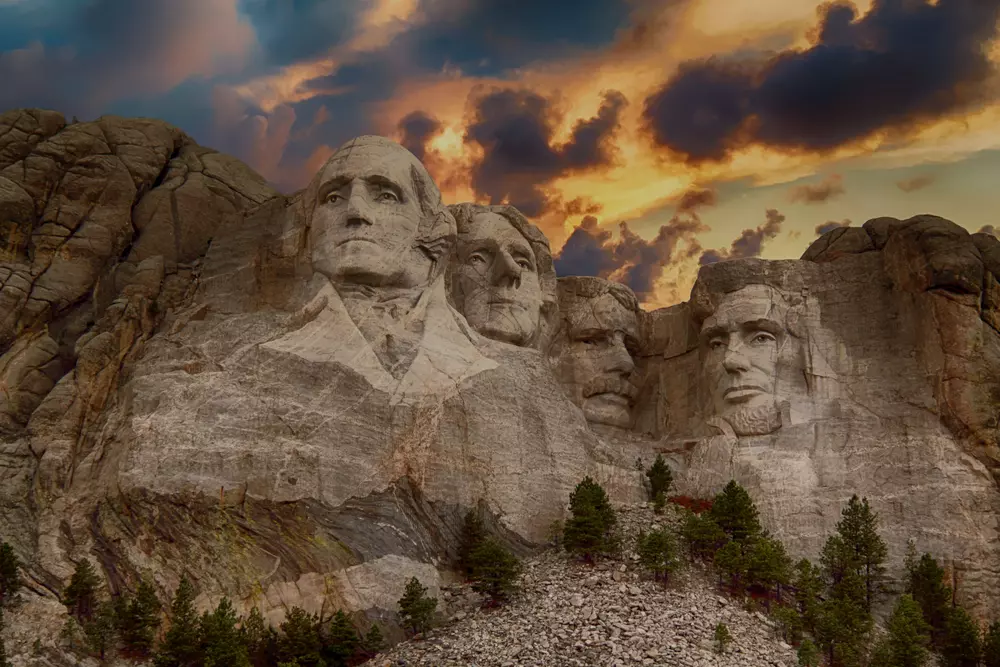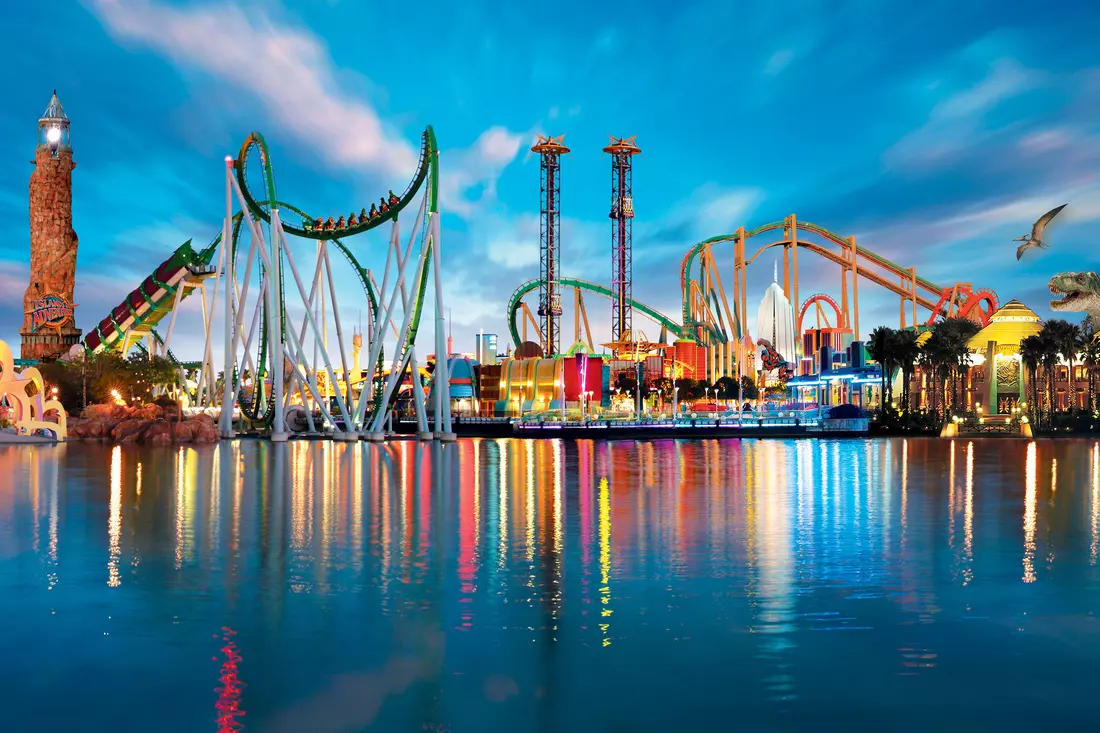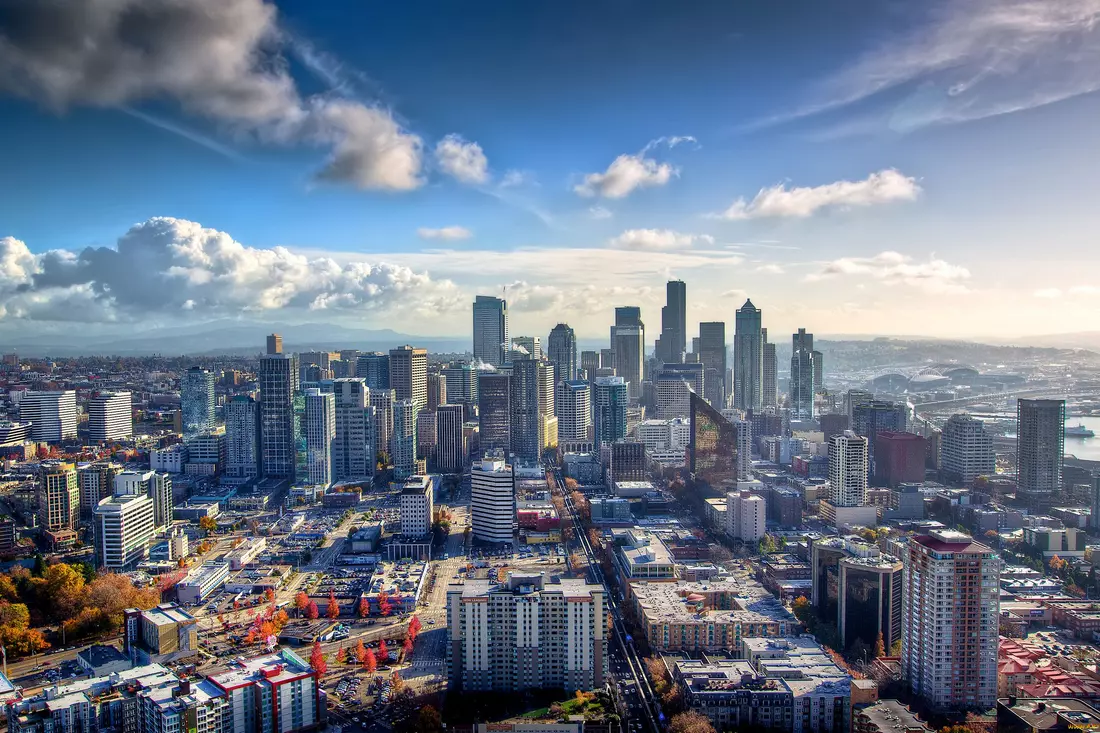America is a country with a powerful and extensive media system. Here, every viewpoint finds its audience, and every major city has its own newspaper. The media in the U.S. are not just channels of information. They are a mirror of society, a tool of influence, an arena for ideas, a battlefield of opinions, and a source of constant transformation.
Arguably, in no other country in the world do news media play such a fundamental role in public life. In the U.S., newspapers and television networks not only report events—they participate in shaping them. Journalism here can influence election outcomes, destroy political careers, or, conversely, make someone a national hero. The media are the fourth estate, real and tangible.
The modern American consumes news on average 7 times a day: with morning coffee, during the commute, at work, on the subway, and at home before bed. Some prefer tweets and push notifications, others — print newspapers or evening broadcasts. And yet, despite the abundance of formats and polarization of opinions, the media remain the main compass in the information chaos.
Let’s explore how the media landscape in the U.S. is structured, which newspapers and TV channels set the tone in the news agenda, whom Americans trust, and which trends influence contemporary journalism in the country.
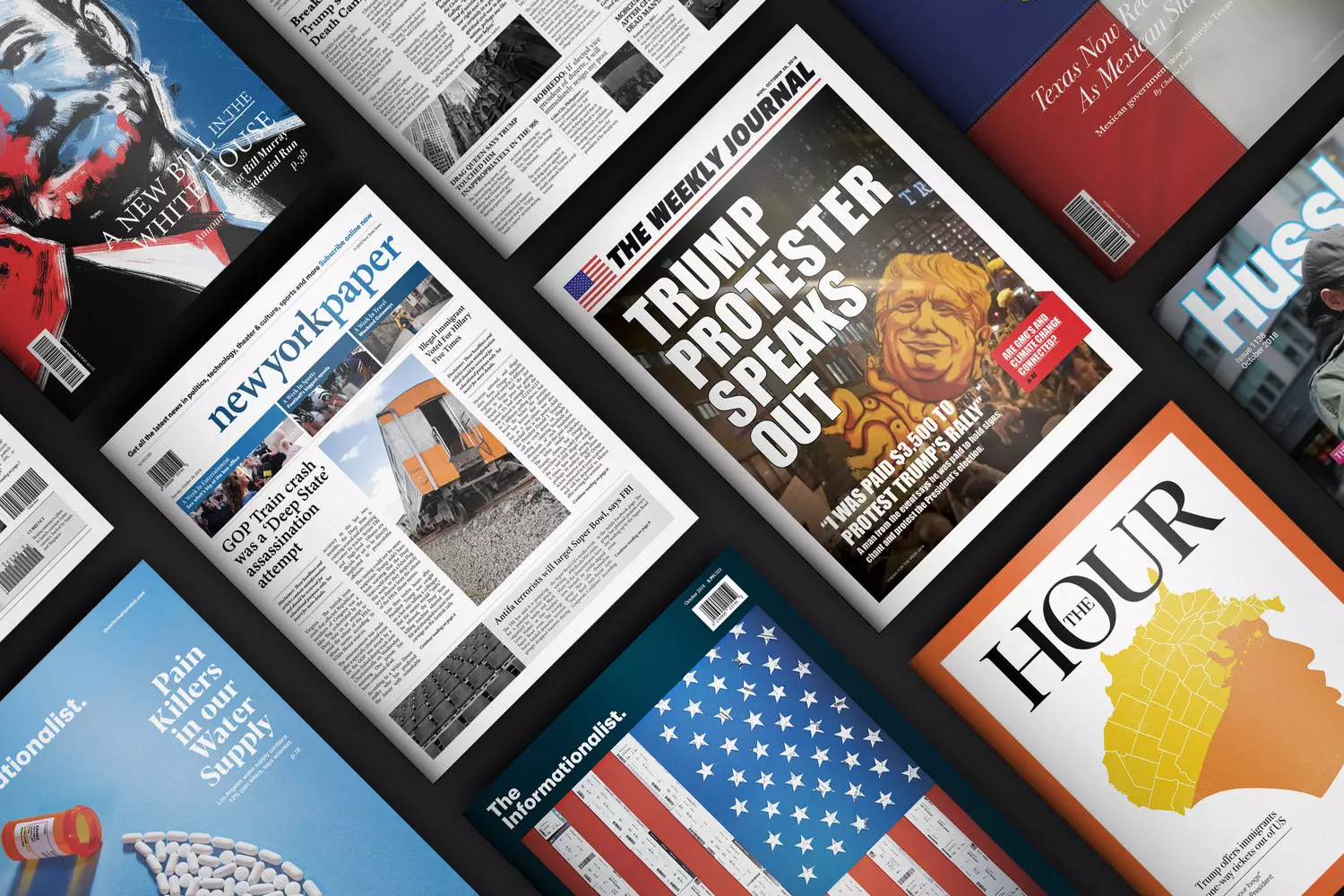
"News is what someone wants suppressed. Everything else is advertising." — Katharine Graham (publisher of The Washington Post)
From the First Pamphlets to Media Giants: The History of American Press and Television
Journalism in the U.S. dates back to the 17th century, when colonial authorities still tightly controlled the printed word. The first newspaper — Publick Occurrences Both Forreign and Domestick — was published in Boston in 1690. It was shut down after the very first issue, but its appearance became a symbol: Americans want to know and tell the truth. Soon, this desire laid the foundation for the entire future media system.
With the adoption of the First Amendment to the Constitution in 1791, freedom of speech and the press was legally enshrined. This gave a powerful boost to the development of the media as an independent institution. From then on, journalists could criticize the authorities without the risk of imprisonment — something unthinkable in many other countries at the time.
- 01. The Era of Print Media: From Revolution to Investigations
The 19th century was the age of print journalism. Newspapers appeared everywhere: in New York, Philadelphia, Chicago, New Orleans. They became not just sources of news but centers of public life. People gathered in cafes to read editorials aloud, discuss politics, and debate.
Print media quickly split into two camps: mass-market and elite press. The former focused on sensationalism, short notes, and circulation numbers. The latter prioritized analysis, aesthetics, and serious authors. This was the beginning of the “information market,” where every newspaper competed for attention.
- The New York Times was founded in 1851 and from the very start emphasized facts and accuracy.
- The Wall Street Journal appeared in 1889 and became the voice of the financial world.
- The Washington Post, purchased by Katharine Graham, became famous for hard-hitting investigations, including the Watergate scandal, which led to the resignation of President Nixon.
The peak of the print era came in the 20th century. Newspapers were everywhere — in kiosks, trains, and on kitchen tables. Every family had its “own” paper. In the 1950s, daily circulations of some publications exceeded 5 million copies. It was in newspapers that the culture of interviews, reportage, and editorial columns was formed.
- 02. Television: The Era of Images and Live Broadcasts
Television entered American homes in the 1940s and ’50s and quickly became the main competitor to the print press. The first news programs were launched by CBS and NBC. They focused on evening news, which quickly became a ritual: dinner — and 30 minutes of the day’s events.
By the 1960s, television had become decisive in politics. It was on screen that John Kennedy won the debates against Richard Nixon — not with words, but with confidence and charisma on camera. This turning point signaled the shift of journalism to a video format.
In 1980, Ted Turner launched CNN — the world’s first 24-hour news channel. It was a revolution: news was no longer awaited until morning; it aired continuously. The era of “breaking news” — urgent live reports — began. This also sparked a race for speed, audience share, and memorable visuals.
In the 1990s, Fox News joined CNN, offering an alternative, more conservative perspective. Later came MSNBC, targeting a liberal audience. The screen became a battleground of ideologies. Major TV networks turned into media empires combining news, talk shows, investigations, and documentaries.
Today, television still holds a significant audience, especially among older generations. But under pressure from YouTube, TikTok, and podcasts, the format is changing: more often short, visual, with a strong message and human story at the center.
American media history is a story of freedom, the struggle for attention, and constant reinvention. From print shops to broadcast, from airwaves to streaming and live streams. But the essence remains the same: to tell society the truth — even if it’s uncomfortable.
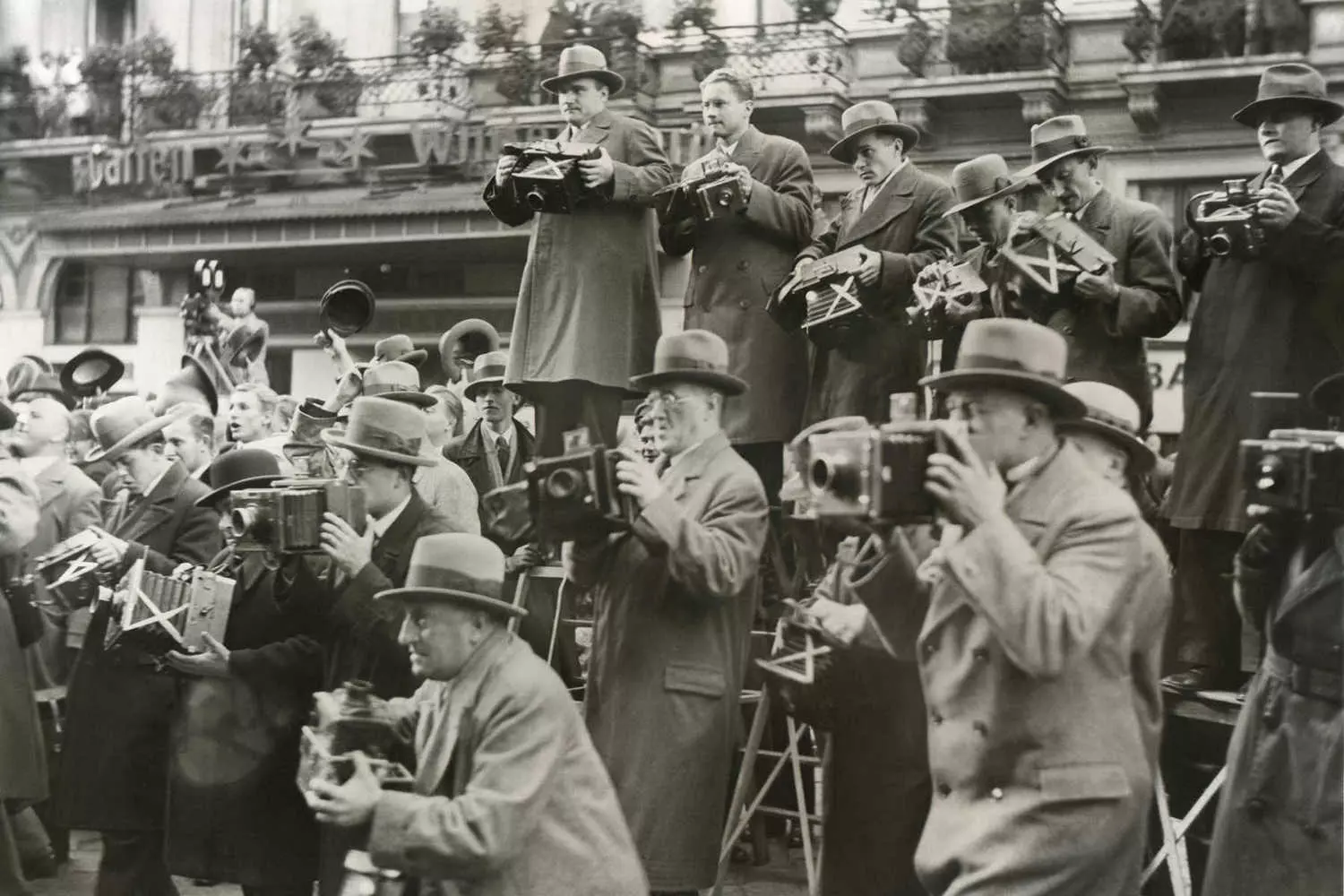
The American Media Landscape: How the U.S. Media System Works
The media sphere in the U.S. is a complex, multilayered ecosystem where each format plays its own role. There is no single center or “main source”: everything is distributed among various information channels that intersect, compete, and complement each other.
Let’s break it down.
- 01. Print Publications: Tradition, Trust, and Analysis
Despite digitalization, print media still plays an important role in American society. Newspapers and magazines are the flagships of analysis, reportage, and investigations. They are read by those who want a deeper understanding of what is happening. Types of print media:
- National newspapers (The New York Times, The Washington Post, The Wall Street Journal);
- Regional publications (Chicago Tribune, Los Angeles Times);
- General interest magazines (Time, The Atlantic, New Yorker);
- Specialized magazines (Scientific American, Wired, Bloomberg Businessweek).
Print media often combines a paper version with digital. Many Americans subscribe to e-versions of newspapers, reading them via mobile apps or websites. Such subscriptions are the main source of revenue for editorial offices, especially after advertising revenues declined. Interestingly, over 60% of The New York Times’ revenue in 2024 came from digital subscriptions.
- 02. Television Channels: The Power of the Image
Television in the U.S. is divided into two main categories: national networks and regional stations. National networks shape the agenda, regional stations adapt it for local audiences. Main players:
- ABC, CBS, NBC — the classic “big three” networks with wide audiences and evening news programs.
- Fox News, CNN, MSNBC — 24-hour news channels with political orientations.
- PBS — public television with educational and cultural content.
- Bloomberg, CNBC — channels for business audiences.
Television is a powerful influence tool. It not only informs but also sets the tone: visual images, presenters’ language, and delivery style all affect perception. Especially during crises, when millions watch the same broadcast simultaneously.
- 03. Online Media and Aggregators: News at Your Fingertips
Digital media is the fastest-growing part of the media landscape. Dominated by:
- Digital versions of traditional media (NYT.com, WSJ.com);
- Online outlets (HuffPost, Axios, Politico);
- News aggregators (Google News, Apple News, Flipboard).
Online media focuses on short formats, mobile adaptation, push notifications, and visual content. They win by speed and convenience.
Americans increasingly read news while on the move, in lines, or before bed. Hence the growing popularity of “digests” and “morning newsletters” with the day’s top stories.
- 04. Radio and Podcasts: Sound as a Way to Stay Informed
Radio in the U.S. remains lively and active — especially news, public, and talk radio. National Public Radio (NPR) is one of the most respected sources of information, especially among educated audiences. Additionally, the U.S. leads in podcast numbers. This format is the “new radio”: from news and interviews to storytelling and investigations.
Popular podcasts can reach millions of listens per week. The format’s advantage is depth, mobility, and trust. People spend tens of hours with the host’s voice, forming a special emotional connection. - 05. Social Networks and the Blogosphere: The New Frontline of News
For youth and part of the adult population, social media is the primary source of information. This includes not only Facebook and Twitter (X), but also TikTok, Instagram, Reddit, YouTube. People read short summaries, watch video explanations, join discussions, and share opinions.
The pros are accessibility and speed. The cons are misinformation and lack of editorial control. But social networks play a critical role in news distribution, especially in emergencies.
Also, bloggers, influencers, and independent authors on platforms like Substack build their audiences and become full-fledged media players.
The American media system is not a pyramid but more like a mosaic. Each source has its own audience, format, pace, and tone. To understand how the U.S. lives, it’s important not to focus on one channel but to look at the full spectrum: from a morning podcast to an evening NBC broadcast, from a Politico article to a joke on TikTok.
That is what makes the American information environment one of the most dynamic and rich in the world.
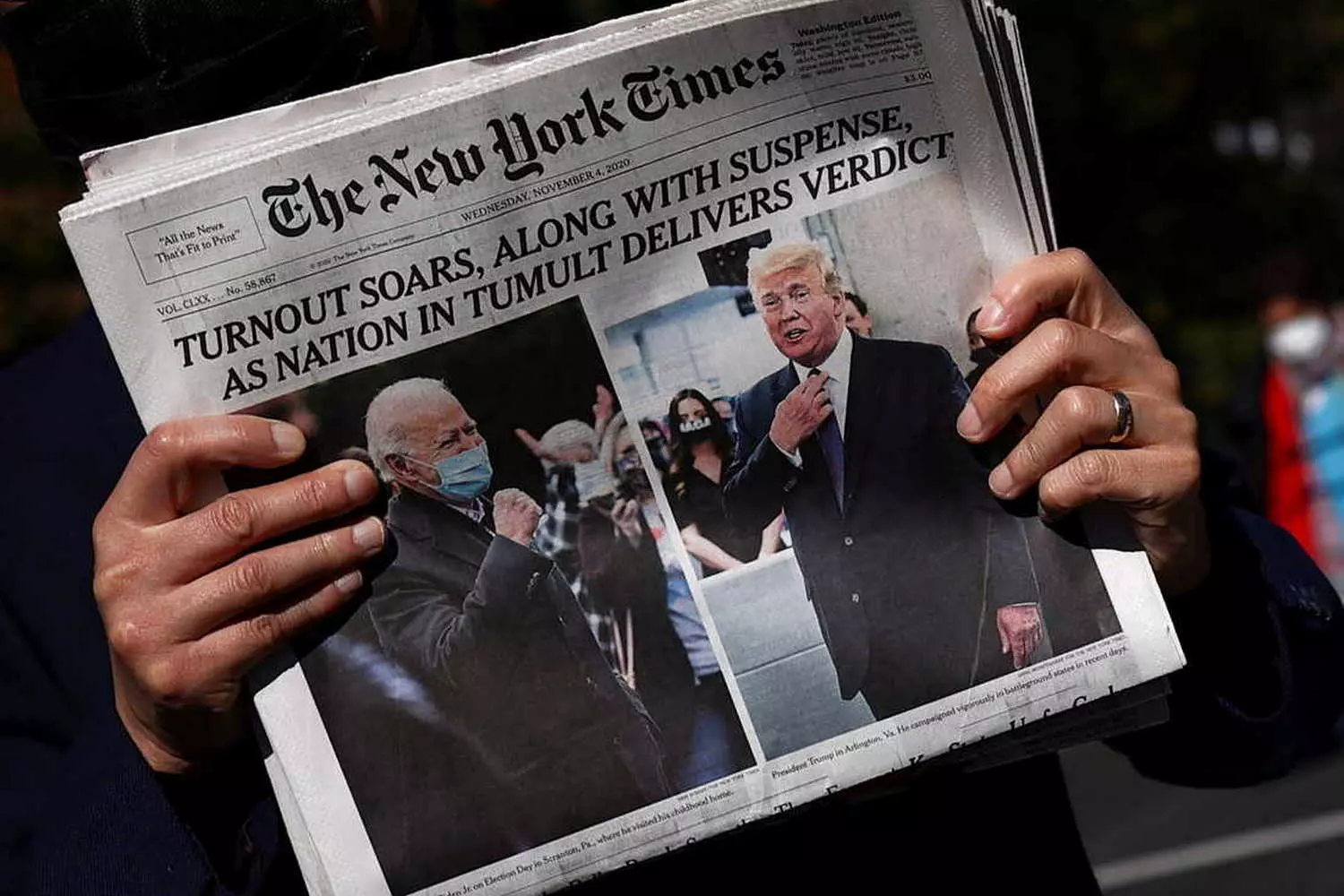
America’s Newspaper Titans: 10 Publications That Shape the Nation’s Opinion
In the era of digital noise and endless news feeds, these newspapers continue to set the agenda, shape public opinion, and influence political decisions. Each publication in this list is not just a source of information but a media institution with its own philosophy, history, and audience.
- 01. The New York Times (NYT)
Undisputed leader and symbol of quality journalism. Founded in 1851. Over its history, the paper has won more than 130 Pulitzer Prizes—more than any other. Strong in international analysis, politics, culture, and investigations. Its digital subscription is the largest in the world among media outlets. NYT was the first to introduce a paid digital subscription and made it a profitable model. - 02. The Washington Post (WaPo)
The newspaper of the U.S. capital, especially authoritative in politics, government, and elections. Owned by Jeff Bezos since 2013, which gave a strong boost to its digital development. An important player in exposing White House insiders and backstage power. WaPo’s slogan — "Democracy Dies in Darkness" — became a symbol of journalistic mission in the era of fakes and pressure on the press. - 03. The Wall Street Journal (WSJ)
The bible for financiers and economists. Covers markets, business, politics, and technology. Founded in 1889. Owned by Rupert Murdoch’s media holding News Corp. Conservative but deeply respected for accuracy and analysis. WSJ is read by almost every Wall Street trader. - 05. Los Angeles Times (LA Times)
The main newspaper of the West Coast. Covers Hollywood, culture, local and national politics. Based in California. In the past decade, has actively invested in digital projects, including multimedia special reports. LA Times was the first to report on the death of Michael Jackson. - 06. Chicago Tribune
The oldest regional publication in the Midwest. Founded in 1847. Despite its regional status, it publishes quality national reports. Was one of the voices of investigative journalism in the 20th century. Tribune exposed scandals in police and government long before the internet leak era. - 07. The Boston Globe
A symbol of intellectual journalism in New England. Especially famous for exposing sexual abuse in the Catholic church. Its investigation became the basis for the film Spotlight, winner of the Oscar. In 2003, Globe won a Pulitzer Prize for this exposé. - 08. San Francisco Chronicle
Publication of Silicon Valley and progressive California. Covers startup culture, urbanism, local politics. Becoming increasingly digital and IT-focused. One of the first traditional media to launch a daily news podcast. - 09. New York Post
A tabloid with a provocative style. Founded in 1801 by Alexander Hamilton. Today owned by Rupert Murdoch. Famous for loud headlines, scandalous topics, and vivid photos. A favorite among pop culture and city news fans. Despite its form, sometimes first to publish important political leaks. - 10. Newsday
A regional publication based on Long Island, New York. Focuses on local news, crime, on-the-spot reporting. Strong in photo and video journalism. Loved by the audience for specificity and speed. In 2020, Newsday received a prestigious award for investigating racial discrimination in real estate sales.
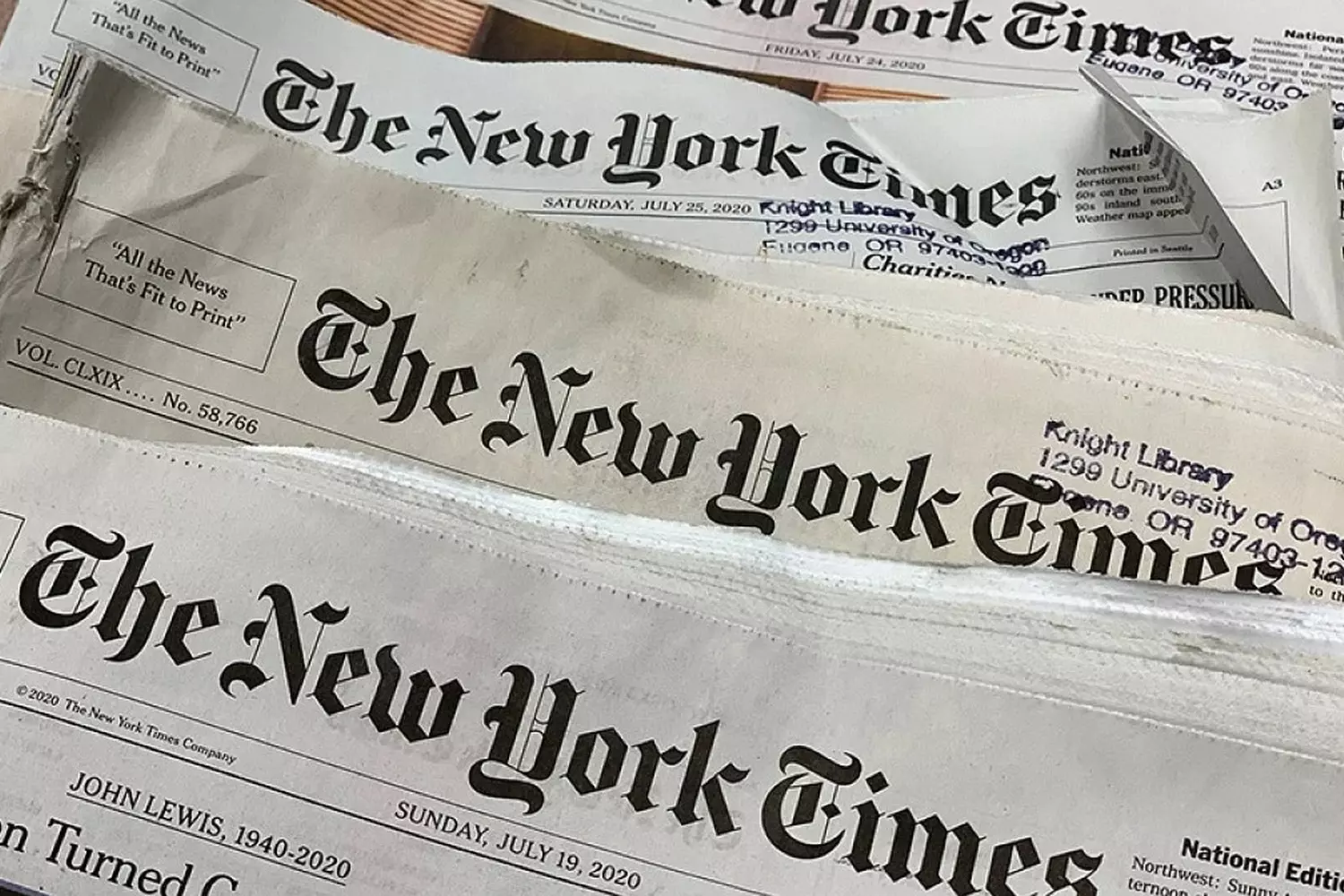
Ernest Hemingway: Biography of a Great American Writer
U.S. Television Titans: Trusted by Millions of Viewers
American television is not just a stream of news. It is an arena where views are formed, ideologies clash, and political trends are born. National TV networks in the USA play a key role in shaping public opinion and remain a source of information for millions of citizens. Let’s take a look at who stands behind this influence.
- 01. CNN (Cable News Network)
CNN is the world’s first 24-hour news network, founded in 1980 by media magnate Ted Turner. It was a revolutionary step: news became available 24/7 for the first time.
CNN targets a liberal, democratically inclined audience. The channel emphasizes international affairs, investigations, live reports, and breaking news. Its coverage is watched worldwide — especially during crises, disasters, or elections. CNN is the only channel with studios not only in Washington and New York but also in London, Hong Kong, and Abu Dhabi. - 02. Fox News
Fox News is the flagship of the conservative media sphere. Founded in 1996 by Rupert Murdoch as an alternative to the “liberal mainstream.” Today, it is the most popular news channel in the USA by audience size.
The channel focuses on patriotic rhetoric, defending traditional values, criticizing the Democratic agenda, and actively supporting Republican politicians. Hosts such as Tucker Carlson (until 2023) became cultural and political phenomena. Fox News leads in the evening prime-time slot: its shows consistently draw over 3 million viewers. - 03. MSNBC
MSNBC is media with an opposite vector. A left-liberal channel close to progressive circles and the Democratic Party. Focuses on analytical programs, talk shows, and interviews with opinion leaders.
The channel is popular among audiences with higher education levels and residents of large metropolitan areas. Its style is calm, thoughtful presentation, fewer sensational headlines, more context. MSNBC actively uses digital platforms: YouTube, podcasts, mobile apps. - 04. ABC News, CBS News, NBC News
These three networks form the foundation of the “old television order.” Each started broadcasting in the mid-20th century and still ranks high in viewer trust.
- ABC News (part of Disney corporation) is famous for live broadcasts from the scene and evening digests;
- CBS News is known for its program “60 Minutes” — a benchmark of television journalism;
- NBC News aims for balance: from hard news to cultural reports.
All three strive to maintain neutrality and adhere to fact-checking standards, especially amid political polarization.
- 05. PBS (Public Broadcasting Service)
PBS is public television. A non-commercial structure funded by donations, grants, and minimal government involvement. A symbol of independent journalism, trust, and intellect.
PBS produces documentaries, educational programs, cultural shows, and political reviews without shouting or sensationalism. Its audience includes intellectuals, students, teachers, and those tired of information noise. Programs like "Frontline" and "NewsHour" are considered standards of objective reporting. - 06. Bloomberg TV
This channel is the choice of the business community. Founded by Michael Bloomberg, billionaire and former mayor of New York. Bloomberg TV covers market news, currency rates, corporate mergers, forecasts, CEO interviews, and economist analysis. The channel broadcasts not only in the USA but worldwide, especially in business circles. It is watched in banks, stock exchanges, and investment funds. Bloomberg is one of the few channels where you can hear real Wall Street insiders.
American TV networks are more than just channels. They represent different views, approaches, and rhetoric. Some choose Fox News to hear the conservative position. Others tune into MSNBC or PBS for analytical context. And some switch between channels to get a complete picture of what’s happening.
Television in the USA is lively, polarized, active, and remains one of the most influential links in the nation’s information chain.

Digital Leaders: Who Shapes the Online Agenda
The world of news is rapidly moving into your pocket. The smartphone has become the main window into the information reality for most Americans. Whereas before an important article was searched for in the morning paper, today it is read in a push notification or in an aggregator’s feed. Online media and news platforms play an increasingly significant role in shaping opinions, especially among young people and busy professionals.
Here are the current leaders in the digital news race:
- 01. Google News
A global news aggregator that selects articles from thousands of sites worldwide. It works based on algorithms but takes into account the user’s region, interests, and behavior.
Pros: wide coverage, personalization, trust in the Google brand. More than 280 million users monthly — one of the most read sources worldwide. - 02. Apple News
A pre-installed app on Apple devices. Functions as an aggregator and subscription platform. Here you can read both free news and materials under paid subscription (Apple News+).
Audience: iPhone and iPad owners, office workers, middle class. In 2023, the service had over 125 million active users. - 03. Yahoo News
Once a flagship of digital press. Today — still one of the largest news portals in the USA. Combines reports from its own correspondents and aggregates external sources.
Focus: politics, society, lifestyle. Yahoo News often ranks among the top 5 most cited online sources. - 04. HuffPost (Huffington Post)
A left-liberal online publication founded by Arianna Huffington. Started as a blog platform but quickly grew into a full-fledged news media with dozens of editors and authors.
Themes: politics, human rights, culture, inclusion, feminism. HuffPost actively uses multimedia: videos, podcasts, infographics. - 05. Axios
A minimalist news site for those who have no time. Its slogan — “Smart brevity”. Each news item is presented as a short structured block with headline, facts, and conclusions.
Audience: entrepreneurs, young politicians, residents of large cities. One of the fastest-growing startups in American media in the last 5 years. - 06. Vice News
Started as a glossy magazine about punk culture, it has become a global media outlet focusing on youth issues, protests, investigations, and unconventional topics.
Format: reports, videos, YouTube series, participatory journalism. Vice was the first to report from ISIS camps, from inside. - 07. The Daily Beast
Witty, bold, and bright. This portal specializes in commentary, scandals, political leaks, and cultural criticism. It does not shy away from taboos and loud statements.
Style: a mix of analysis, blog, and satire. One of the most cited sources on Twitter among American journalists. - 08. Politico
A mastodon of political online journalism. Launched in 2007, it quickly became the main source of insider news from Washington. Covers everything — from election campaigns to court decisions and the workings of the Congress.
Format: long articles, morning digests, expert opinions. Politico has separate European editions and influences the EU agenda.
Digital media not only replace newspapers and TV — they change the very structure of information consumption. Speed, personalization, the ability to comment, visual content — all have become the new normal.
Americans increasingly form their opinions not based on a single article, but on a chain of posts, push notifications, tweets, and videos. And these platforms are the ones shaping this digital news flow.
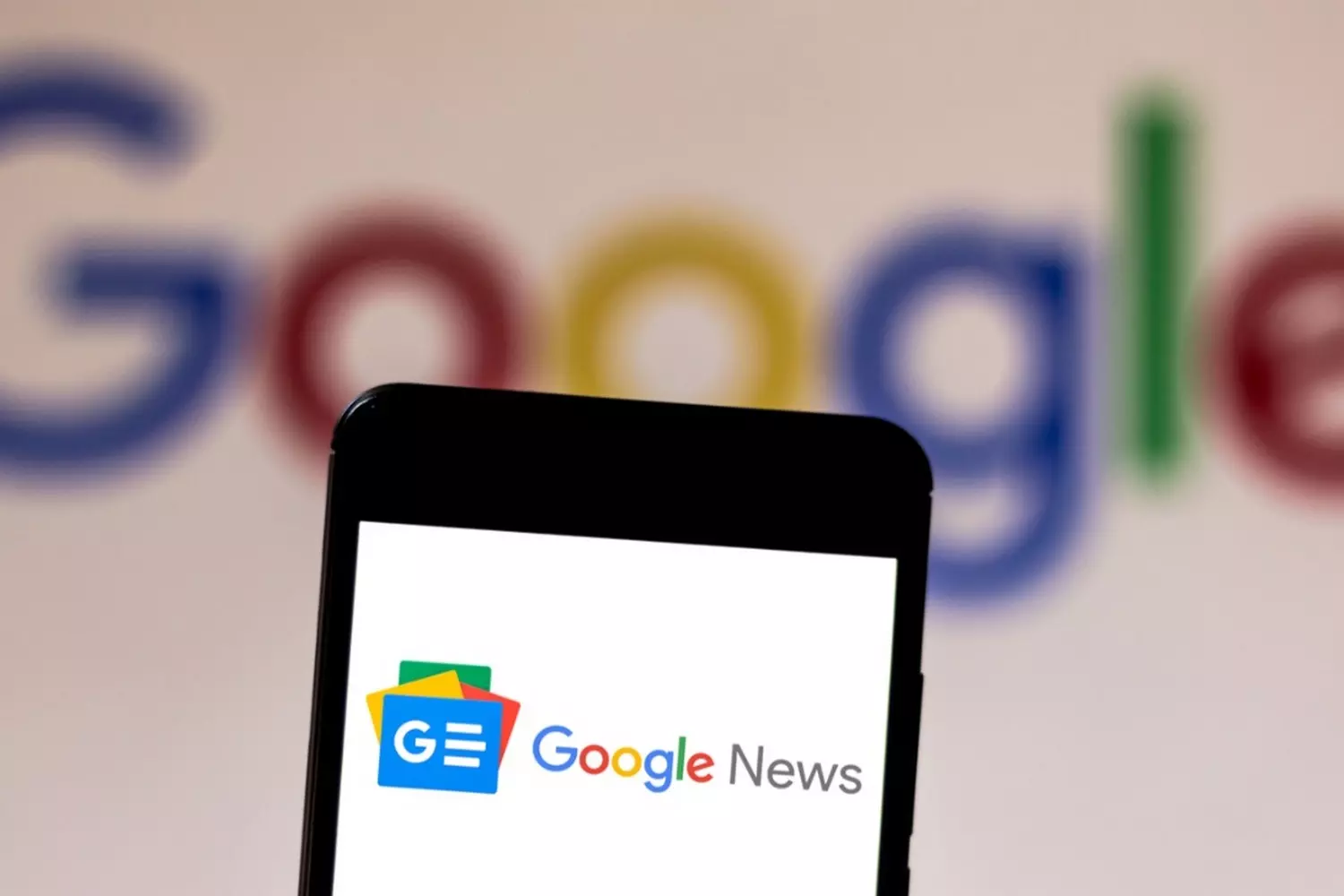
America’s Voices: Top Influential Journalists
Journalism in the USA is not just about media brands but also about prominent personalities. People who have become symbols of their era, exposing lies, conveying truth, and heroes of investigative reporting. Their names are known in every household, their broadcasts are discussed on social media, and their articles are quoted at all levels. Here are those who define the face of American journalism today and over recent decades.
- 01. Bob Woodward — the legend of political journalism
Journalist at The Washington Post, one of those who uncovered the Watergate scandal that led to President Nixon’s resignation. His name has become synonymous with the word "insider." He continues to publish investigations based on exclusive sources from the White House. “I never ask unnecessary questions. I just listen — and they start talking.” - 02. Anderson Cooper — the face of CNN
One of the most recognizable television journalists. Host of the program Anderson Cooper 360° on CNN. His style is empathetic, restrained, and compassionate. He has reported from hotspots including Iraq, Haiti, and New Orleans after Hurricane Katrina. A descendant of the Vanderbilt dynasty, but built his career on his own. - 03. Rachel Maddow — the analytical voice of MSNBC
Doctor of history, host of an evening show on MSNBC. Sharp, well-argued, ironic. Her style is a deep analysis of U.S. politics from a progressive perspective. She influences the agenda as much as the news themselves. The first openly gay face in prime-time political TV. - 04. Tucker Carlson — polarizing conservative leader
Former host of the highest-rated show on Fox News — Tucker Carlson Tonight. Charismatic, provocative, often criticized for manipulation, but remains a cult figure for the right-wing audience. In 2023, he left the channel and launched an independent video project. His videos on X (Twitter) gather tens of millions of views. - 05. Christiane Amanpour — the international voice of truth
Chief international correspondent for CNN. Covered wars in Bosnia, Iraq, Rwanda, Afghanistan. Winner of numerous awards for honest news coverage in conflict zones. Interviewed leaders at all levels. Her voice is one of the most recognizable in international journalism. - 06. Ronan Farrow — exposer of stars and systems
Investigative journalist, son of actress Mia Farrow and director Woody Allen. His materials in The New Yorker about Harvey Weinstein’s harassment sparked the #MeToo movement. Received the Pulitzer Prize for this. Former diplomat, fluent in several languages including Russian. - 07. Trevor Noah — journalist or comedian?
Although he is not a “classic” journalist, the host of The Daily Show on Comedy Central has become an important commentator on news. His satire and political irony influence youth opinion and shape attitudes toward serious issues through humor. Originally from South Africa, he became the voice of the millennial generation. - 08. Maggie Haberman — the chronicler of Trump
Reporter at The New York Times, specializing in Donald Trump. Her sources within his circle are among the most reliable. Her book “Confidence Man” became a bestseller and one of the main chronicles of Trump’s presidency. Her tweets are a must-read for all U.S. political strategists. - 09. Lester Holt — the reliable voice of evening news
Host of NBC’s evening news. One of the most respected TV journalists. His style is calm, neutral, trustworthy. He hosts presidential debates, reports from disaster zones, and interviews heads of state. The first African American to become the sole anchor of a national news broadcast. - 10. Kara Swisher — queen of tech journalism
Founder of Recode, podcast host, author of sharp interviews with Silicon Valley leaders. Direct, biting, smart. Interviewed Elon Musk, Mark Zuckerberg, Satya Nadella, and other IT giants. She is called “Silicon Valley’s most dangerous interviewer.”
In a world where everyone writes and films, it is the journalist’s reputation that becomes an anchor of trust. People follow not only media brands but also specific voices, styles, and approaches. These journalists are not just faces on the screen or names in bylines. They are part of American democracy, the fourth estate in action.
Opinion leaders outside journalism: how Elon Musk and others influence the US information field
In the modern media space, it is increasingly heard that traditional journalists are no longer the only ones shaping public opinion. Opinion leaders not directly related to professional journalism — entrepreneurs, celebrities, bloggers, and public figures — have come to the stage. Among them, the figure of Elon Musk — an entrepreneur, engineer, and visionary whose voice resonates loudly in the information field of the USA and the world — stands out especially.
- 01. Who are opinion leaders outside journalism?
These are public figures whose opinions, statements, and actions have enormous influence on society, markets, and politics, despite not being professional journalists. Their authority is built on success in business, innovation, personal charisma, and active presence on social media. Besides Elon Musk, this category includes:
- Bill Gates
Co-founder of Microsoft and philanthropist, whose comments on technology and healthcare are actively discussed in the media. - Oprah Winfrey
TV host and entrepreneur whose voice has huge influence in culture and public opinion. - Kim Kardashian
Media personality whose influence on pop culture and social justice issues is hard to overestimate. - Greta Thunberg
Young activist who became a symbol of the fight for ecology and inspires millions.
- 02. Elon Musk — the most influential “non-journalist” of our time
Elon Musk is not just a billionaire; he skillfully uses social media, especially Twitter, to communicate directly with millions of followers. His tweets provoke broad resonance:
- Market impact
One of his statements can crash or spike the stock prices of companies and cryptocurrencies. - Shaping public discourse
Musk discusses topics from space exploration and artificial intelligence to free speech and politics. - Own informational agenda
Musk creates and promotes his ideas bypassing traditional media.
His activity shows how an opinion leader can directly influence mass consciousness without being a journalist or an official expert.
- 03. Why are opinion leaders outside journalism so influential?
- Direct access to the audience
Social networks allow them to bypass editorial barriers and deliver their position directly to millions. - Charisma and success
Successful people inspire trust; their opinions are perceived as expert in their fields. - Speed of reaction
They can instantly comment on events without bureaucracy or editorial rules. - Multiformat communication
Use of videos, memes, posts, and live streams makes their communication vivid and memorable.
- 04. Risks and challenges of influence by “non-journalists”
- Lack of editorial verification
Unlike media, their statements don’t always go through fact-checking, increasing the risk of misinformation. - Personalization of the information field
When the voice belongs to an individual rather than an institution, society can become more susceptible to manipulation. - Role confusion
Opinion leaders simultaneously influence politics, economy, and culture, complicating their role and responsibility.
Opinion leaders outside journalism, such as Elon Musk, are changing the traditional media landscape in the USA. Their influence is vast and multifaceted — from managing market trends to shaping public discourse. Understanding this phenomenon today is as important as knowing how classic media work.
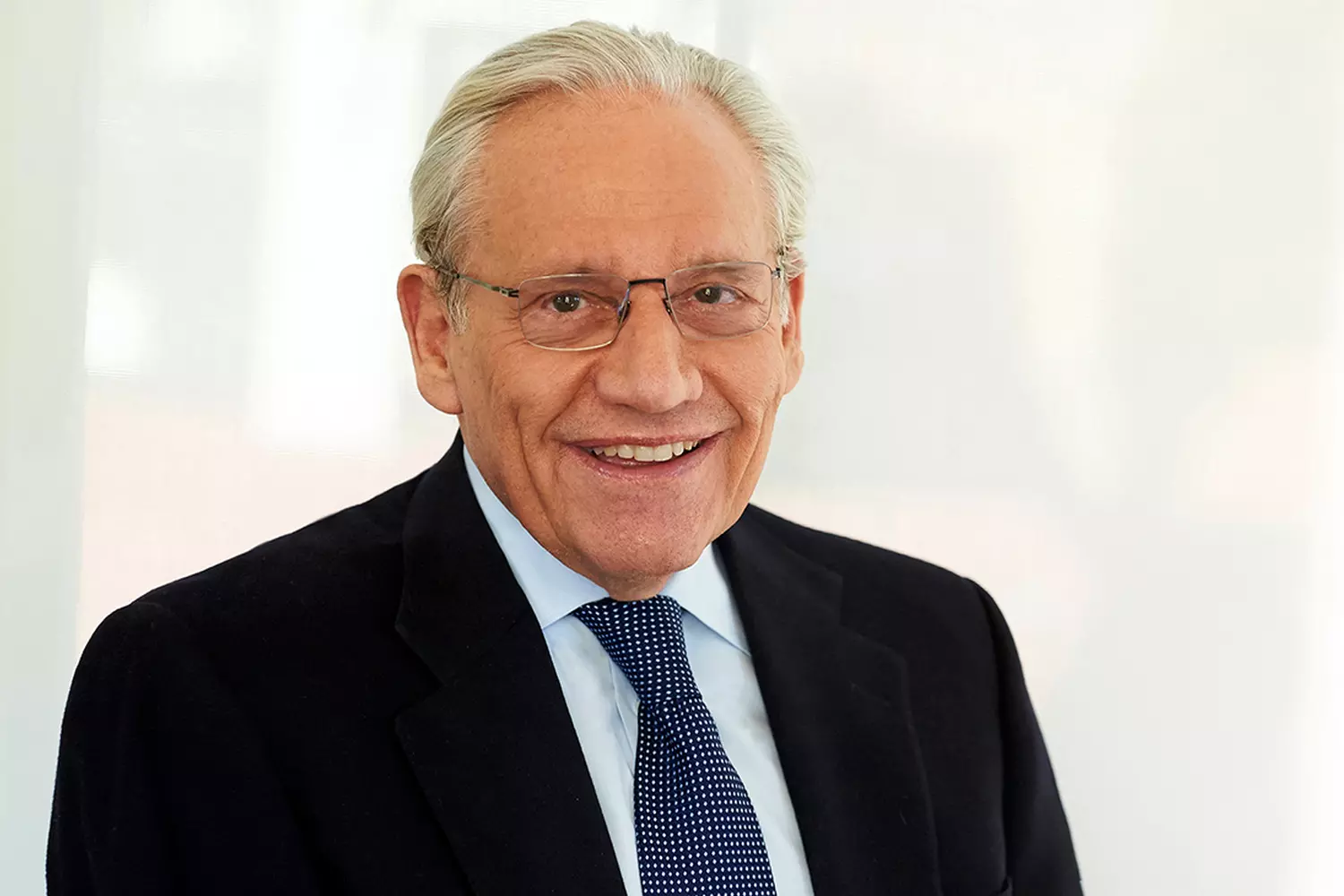
Who Do Americans Trust? A Breakdown of Media Credibility Rankings
In today’s world of information abundance, the question of trust in the media becomes crucial. Americans are one of the most media-savvy nations, and their attitude toward news sources reflects the complex dynamics of society. Surveys conducted by the respected Pew Research Center show that trust in media in the USA is not just changing — it is undergoing profound transformations.
- 01. The most trusted sources according to the majority
Among the vast number of media channels and publications, there are those whom Americans continue to trust. The top spots in reliability are held by PBS (Public Broadcasting Service), The Associated Press, and Reuters. These are organizations with a long history that traditionally adhere to strict journalism standards — accuracy, objectivity, independence.
- PBS
A non-commercial public television funded mainly by donations, free from commercial pressure. Its programs are considered a standard of honesty and calm, in-depth analysis. - Associated Press (AP)
One of the oldest news agencies, providing news to many media outlets worldwide. AP is valued for its balance and commitment to facts. - Reuters
A global agency focused on timely, verified news, especially in business and international politics.
Their common denominator is a high reputation and many years of experience that help maintain trust even as society becomes increasingly skeptical of the media.
- 02. The most polarizing media: Fox News and CNN
The two largest news TV channels — Fox News and CNN — evoke the most contradictory feelings among the American audience. They are not just news sources but centers of political polarization.
- Fox News has a clearly conservative orientation and strong support among Republicans. For some, it is a reliable voice for the right, while for others, a source of propaganda.
- CNN, in turn, is perceived as a channel with a liberal bias, close to the Democrats. Its critics call it a “fake news factory,” while supporters see it as a model of modern journalism.
This split reflects the deep division in American society. Many people trust only those media that align with their political views, ignoring alternative perspectives.
- 03. The trend of declining trust in media since the 2000s
Research by Pew Research Center shows that since the early 21st century, the level of trust in media in the US has significantly declined. The main reasons are:
- Increasing political polarization and partisan influence on the media;
- The spread of disinformation and fake news on the internet;
- Commercial pressure leading to “clickbait” journalism and sensationalism;
- The loss of traditional journalistic values in some media.
Today, only about one-third of Americans say they trust most news, which is significantly lower than in the 1990s and 2000s.
- 04. Youth and new media: TikTok, Reddit, and YouTube
A special group is the younger generation. They watch traditional television less and read newspapers less often. Their sources of information are TikTok, Reddit, YouTube, and other digital platforms.
- Here, news is often presented in the form of short videos, memes, comments, and live discussions.
- Information often comes from “ordinary people” and independent authors rather than classic journalists.
- This creates new opportunities for interactivity but also new risks of spreading unreliable information.
Youth increasingly learn to filter and critically evaluate information themselves, which makes their approach to media different from previous generations.
In the era of digital revolution and social division, the media face the challenge of regaining audience trust. For Americans, it is important not just to receive news but to feel its truthfulness and objectivity. In this context, reliable sources that withstand the test of time and political storms become especially valuable.
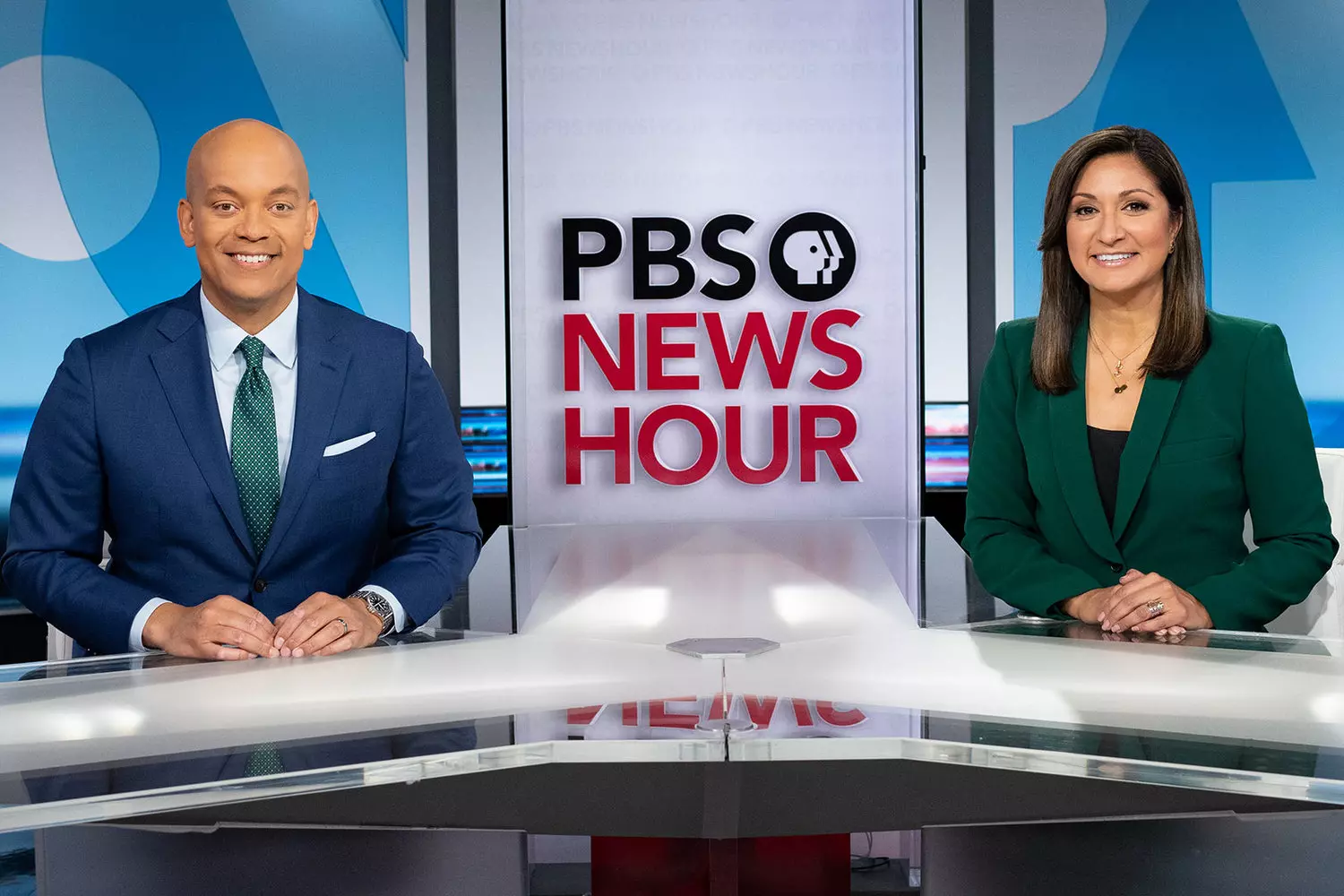
Media vs. Politics in the U.S.: Friends or Foes?
In the American media ecosystem, the relationship between the media and politics has long surpassed the simple role of informing the public. Today, many major media outlets are not just channels for delivering news but active participants in the political process — a kind of “fourth estate” — capable of influencing public opinion, election campaigns, and even shaping the national agenda.
- 01. Political partisanship of the media: an open secret
In the USA, virtually no major media outlet hides its political preferences. This is a historical phenomenon that has grown over decades and today has reached a high level of polarization:
- The New York Times and MSNBC openly support the Democratic agenda. Their editorial materials, analysis, and commentary often aim to promote liberal ideas, social progress, the protection of minority rights, and environmental initiatives.
- On the other hand, Fox News and The Wall Street Journal position themselves as the voice of conservatives and Republicans. Their journalism reflects values of free market, traditional family institutions, tough foreign policy, and limited government intervention.
These media outlets form not only a stream of news for their audiences but also a system of values, political beliefs, and even identity.
- 02. Media as participants in electoral battles
Before every presidential and midterm election in the US, the media environment turns into an arena of fierce informational battles:
- Channels and publications actively analyze political programs, criticize opponents, and support their favorites.
- Advertising campaigns, news, and analysis often have the hidden goal of influencing voters’ moods.
- In the digital age, the struggle takes place not only on television and in newspapers but also on social networks, podcasts, and blogs.
This interaction between media and politics contributes to increasing political polarization but simultaneously stimulates active civic engagement and discussion of important issues.
- 03. Consequences of political partisanship for society
The clear political division of the US media environment has both pros and cons. Pros:
- Allows audiences to choose media outlets that best match their beliefs and worldview.
- Encourages diversity of opinions and a rich discourse.
- Creates transparency, as media viewpoints are not hidden but clearly expressed.
Cons: it intensifies polarization and conflicts in society, increases the risks of spreading one-sided and distorted news, and leads to a decline in trust in the media overall.
- 04. How the media change the political landscape
The media do not merely reflect politics — they shape it. This is especially evident in the US:
- Reports and investigations can lead to sensational scandals and political consequences.
- Columns and talk shows set the tone for political discussions.
- The opinions of leading journalists and analysts often influence voters’ decisions and politicians’ actions.
Thus, in the US, media and politics are in a complex and constant interaction — both alliance and confrontation at once.
American media are not neutral observers but active players in the political game. Their power and influence are immense, and understanding US politics without considering the media is impossible.
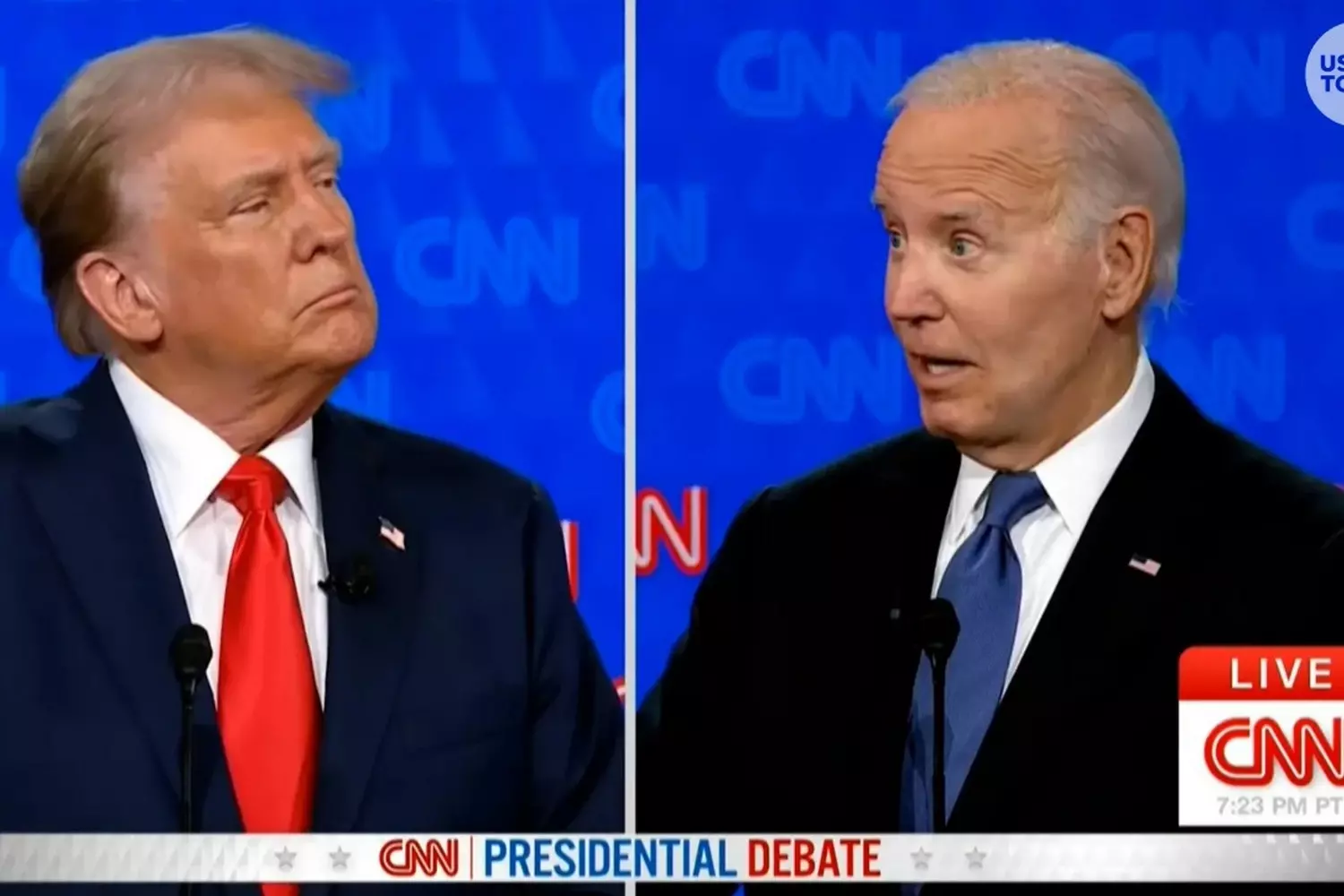
The Myth and Reality of Media Censorship in the U.S.: Balancing Freedom of Speech
Freedom of speech is one of the cornerstones of American democracy, enshrined in the First Amendment to the Constitution. The United States often positions itself as a country with one of the freest and most independent media systems in the world. However, the issue of censorship in the media is not an empty phrase and is far from straightforward. Behind the façade of absolute freedom lies a multitude of nuances, restrictions, and even forms of pressure that influence news content and the shaping of public opinion.
- 01. Freedom of speech vs. censorship: what’s the difference?
Before discussing censorship in the US, it is important to understand its specifics. In the American legal system, there is a principle that the government cannot prohibit or restrict publications based on their content — this is the foundation of press freedom. Yet at the same time:
- Media self-regulation — editorial offices may limit publications to comply with laws or internal policies.
- Pressure from owners, advertisers, and authorities — while direct censorship does not exist, there is indirect influence.
- Legal frameworks — restrict, for example, defamation, incitement to hatred, and calls for violence.
Thus, censorship in the US is more of a complex interplay of factors affecting freedom of speech rather than strict government-imposed restrictions.
- 02. Forms of censorship and pressure on the media
- Economic pressure and self-regulation
Media companies depend on advertisers and subscribers. Advertising is a primary source of revenue, and if publications might harm the image of major brands, outlets often limit or adjust content. This leads to “economic censorship,” where editors remove or soften materials to preserve profits. - Political pressure and threats
Although the government should not intervene directly, individual politicians and officials exert pressure on the media: accusing them of “fake news,” threatening lawsuits, or attempting to block publications through various administrative resources. - Corporate ownership and editorial policy
Large media holdings can set boundaries and censor content in their outlets based on corporate interests and ideology. An example is Rupert Murdoch and his influence on Fox News and The Wall Street Journal.
- 03. Censorship in the digital environment
Social networks and platforms (Facebook, Twitter, YouTube) have their own moderation rules. They may remove or block content they deem to violate community standards, sparking debates about freedom of speech and censorship online. - 04. Historical examples of censorship and the fight for free speech
- The Watergate scandal (1970s)
Journalists at The Washington Post faced attempts by authorities to conceal the truth but managed to bypass obstacles and expose corruption. - The Edward Snowden case (2013)
The publication of secret documents from the CIA and NSA sparked debates about the limits of state secrecy and press freedom. - Modern protests and media coverage
In some cases, journalists face restrictions when covering rallies and protests, especially when authorities try to control the narrative.
- 05. How American journalists fight censorship
- Use anonymous sources and investigations to bypass restrictions.
- Create independent online platforms and media outlets.
- Employ legal mechanisms to protect freedom of speech.
- Engage actively with the public and international organizations.
Censorship in the US is a complex, multifaceted phenomenon, where legal freedoms, economic interests, and political games intertwine. Freedom of speech here lives and evolves but constantly faces challenges and limitations. Understanding these nuances helps to better navigate the American media environment and appreciate its uniqueness.
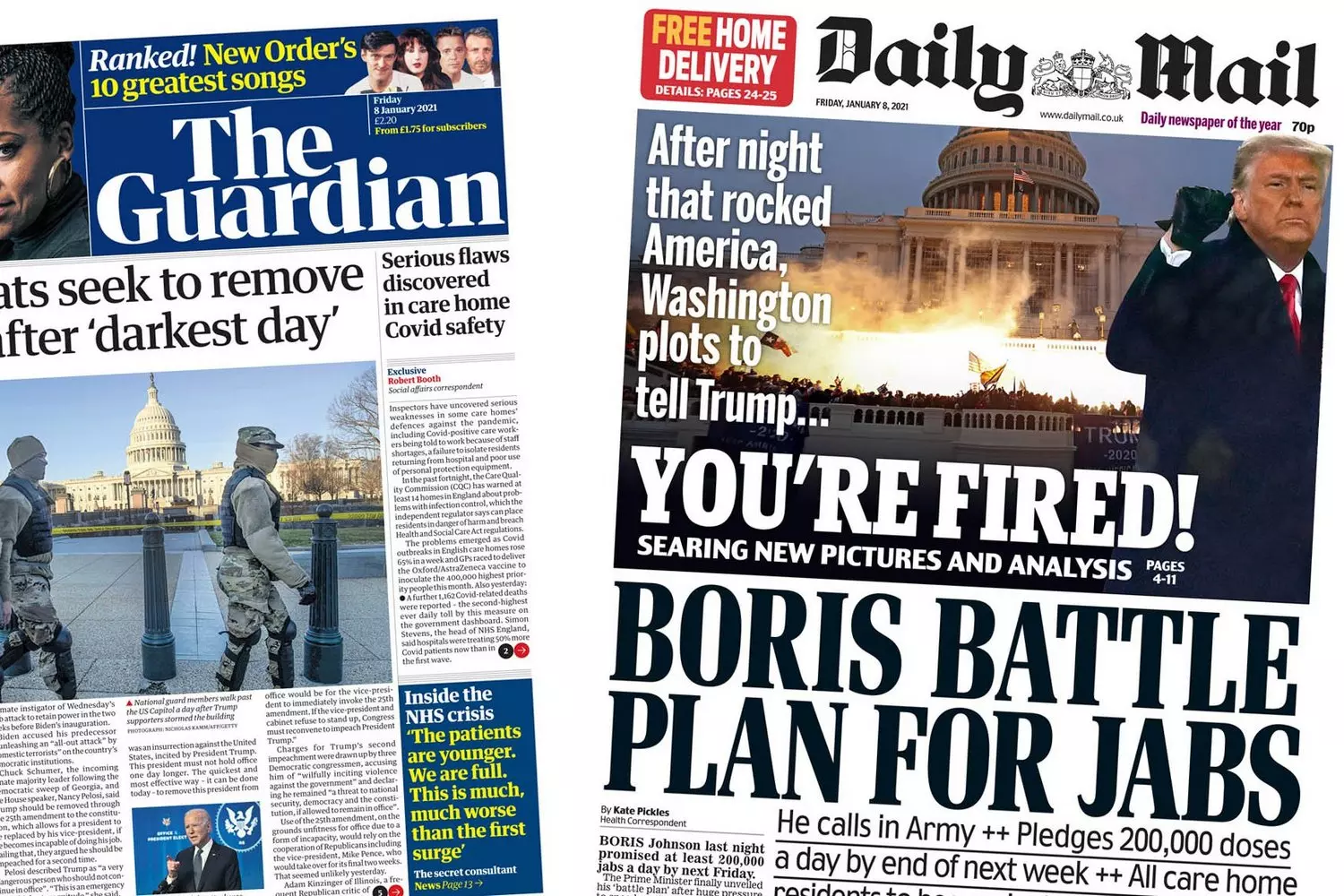
How Americans Decide What to Consume: Unveiling Media Preferences
Understanding the diversity of American media is not as simple as it might seem at first glance. Each US resident’s choice of what to read and watch is shaped by many factors — from place of residence and education level to political views and age. Grasping these features helps explain why Americans consume news so diversely and consciously.
- 01. Geography — an important factor in media choice
America is a vast country with different regions, each having its own media traditions and preferences. For example:
- In large metropolitan areas like New York, Los Angeles, and Chicago, national and international publications are popular — The New York Times, Los Angeles Times, Chicago Tribune.
- In regions with strong cultural characteristics (the South, the Midwest), local newspapers and TV channels dominate, reflecting local news and interests.
- In small towns and rural areas, people more often turn to regional media, which feature more content about community life and issues.
Geography shapes not only media accessibility but also its relevance to the reader.
- 02. Education and media: a time-tested connection
The higher the level of education an American has, the more often they choose deeper and more analytical publications. For example:
- People with university education tend to read The New York Times, The Washington Post, and specialized outlets offering comprehensive views on events and serious investigations.
- Those with a high school education or less tend to prefer simpler and more accessible sources — such as USA Today or local newspapers.
Educated readers seek diversity of viewpoints and do not limit themselves to one source.
- 03. Political views: a filter for media choice
Political orientation is one of the strongest factors influencing media choice in the US. The division between liberal and conservative outlets is widely known:
- Democrat supporters more often turn to CNN, MSNBC, The New York Times.
- Republicans and conservatives prefer Fox News, The Wall Street Journal, New York Post.
This division highlights that Americans choose media that confirm and reinforce their political beliefs.
- 04. Age and media consumption: from TV to TikTok
Age determines the format and platform for receiving news:
- Older generations prefer traditional media — TV news on NBC, CBS, evening broadcasts, printed newspapers.
- Younger people increasingly get information through digital channels: TikTok, YouTube, Reddit, and social networks. The format includes short videos, memes, livestreams, and interactive discussions.
Thus, both the methods and sources of consumption change with age.
- 05. Income level and profession: influence on media preference
Financial status and occupation also affect preferences:
- People with high incomes working in business or science tend to choose specialized outlets — Bloomberg, The Wall Street Journal, professional journals.
- Working-class individuals and creatives may prefer more popular or regional media.
This is linked to the need for information relevant to their professional interests and lifestyle.
- 06. The practice of "news comparison": reading means comparing
One unique trait of American media consumption is the habit of reading and watching news from various sources to compare information and form one’s own opinion. This practice is called "news comparison".
- It is considered normal among educated and active citizens.
- It helps avoid a one-sided view and develops critical thinking.
- Often includes watching news broadcasts with different political leanings and reading both national and regional publications.
The choice Americans make about what to read and watch is a complex and multifaceted process. Geography, education, political preferences, age, and profession create a unique “media portrait” for each individual. Meanwhile, the habit of comparing news from various sources helps people stay informed and critically assess information.
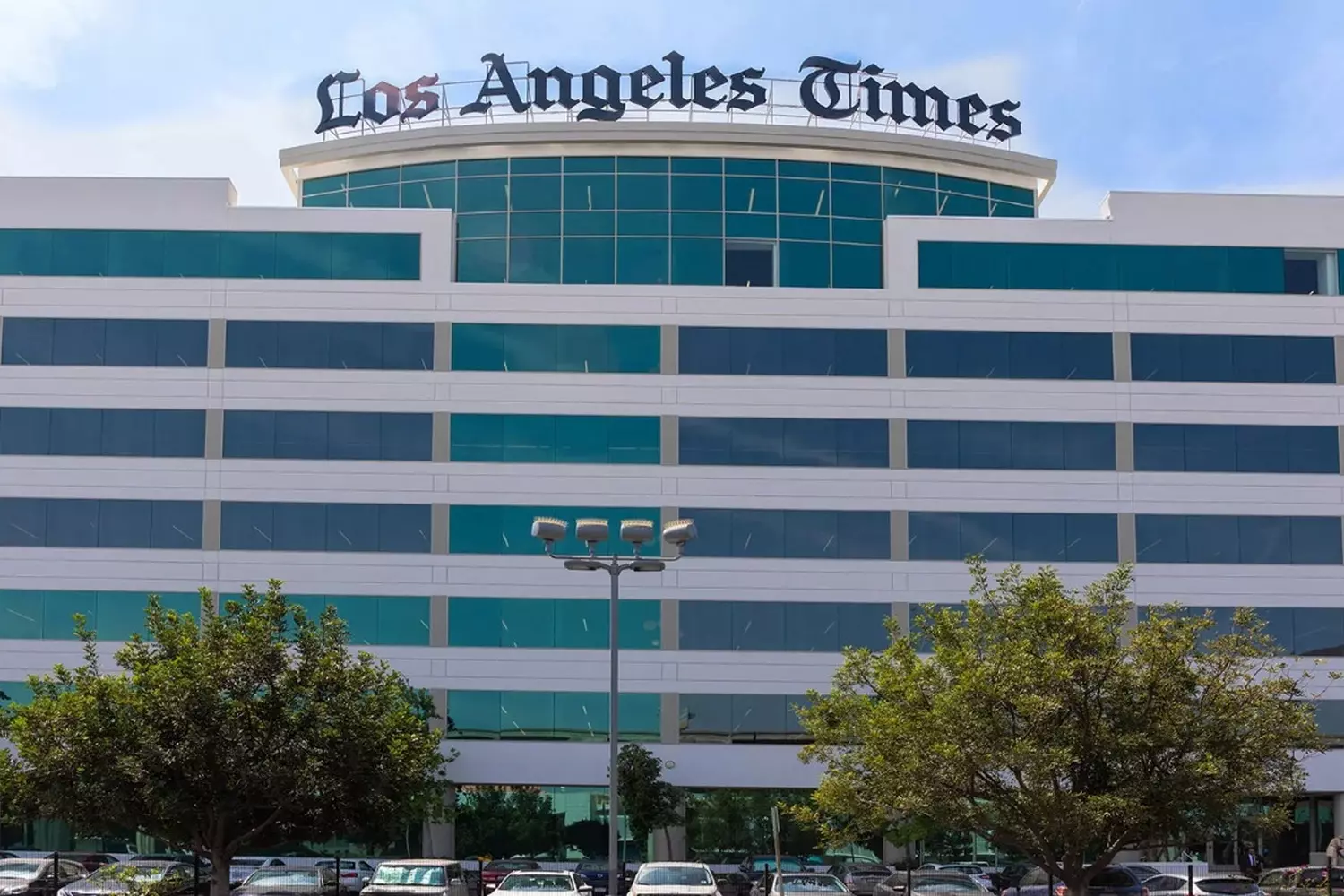
Facing the Future: The Transformation and Challenges of American Journalism
American journalism, one of the most influential and dynamic in the world, stands on the brink of major changes. The digital age is radically transforming traditional formats, working methods, and relationships with the audience. However, despite all the challenges, the core of journalism — the pursuit of truth and quality — remains unchanged.
- 01. Print publications: from paper pages to digital subscriptions
Traditional newspapers and magazines in the US are going through a challenging period. Print circulations are rapidly declining as readers increasingly prefer news in online formats. This leads to a gradual reduction in print editions, closures of regional papers, and restructuring of media companies. However, there are positive trends:
- Many major outlets like The New York Times and The Washington Post have invested in paid subscriptions, helping maintain financial stability.
- Digital subscriptions provide access to exclusive content, analytics, and investigative reporting.
- Electronic versions are accessible anywhere in the country and worldwide — expanding audience reach and media influence.
- 02. Television and a new phase in the battle for audience attention
Television news has traditionally been the main information source for Americans. Today, however, it faces competition from platforms delivering news quickly and interactively:
- YouTube, Netflix, Hulu, and other streaming services are replacing traditional TV programs, especially among younger viewers.
- Podcasts are growing in popularity as a convenient way to get news and analysis “on the go” — during commutes, workouts, or household chores.
- TV companies actively develop their digital platforms and apps to retain viewers.
- 03. Independent journalists and bloggers: a new media force
The digital revolution has opened the door for new voices:
- More independent journalists publish outside traditional editorial offices.
- Platforms like Substack allow authors to create newsletters and earn directly from readers.
- Bloggers and influencers shape public opinion often faster and more effectively than major media.
This trend transforms the information landscape, making it more diverse and democratic.
- 04. Artificial intelligence and automation: the future of newsrooms
AI technologies are increasingly penetrating journalism:
- Automatic news generation and reports on sports matches, financial summaries, and weather are becoming common.
- Big data analytics help journalists identify trends and make forecasts.
- Fact-checking and combating fake news tools improve thanks to machine learning.
Yet AI is not a replacement for humans, but an assistant enabling faster and higher-quality content creation.
- 05. What remains paramount: the thirst for truth and quality journalism
Despite the noise of clickbait headlines and the spread of misinformation, most Americans still value honest, verified, and in-depth reporting.
- In the era of “fake news,” trusted media and professional journalists play a crucial role.
- Consumers demand transparency and accountability from media.
- Quality journalism is the foundation of civil society and democracy.
The future of American journalism is not a rejection of traditions but their transformation. Technologies, new formats, and independent authors create a rich and diverse media space. Yet the unchanging core remains the pursuit of truth and quality — guiding society through a complex world.
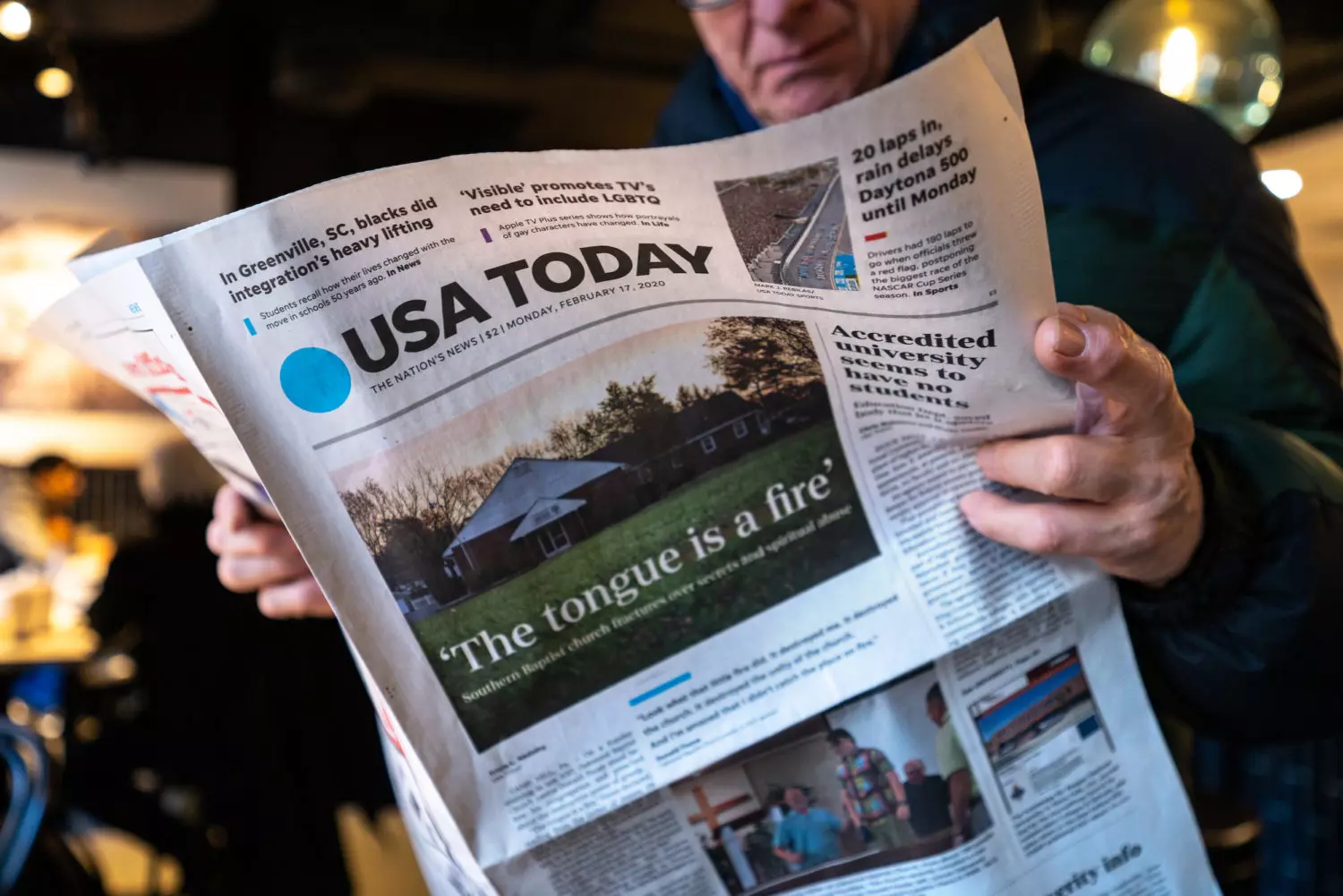
Shocking Stories and Surprising Truths: Fascinating Facts About U.S. Media
American media is not just a source of information but a whole world where politics, technology, scandals, and high-profile investigations intertwine. From the first newspapers of the 19th century to today’s digital giants, the history of media in the USA is full of remarkable events. How did The New York Times influence the naming of Times Square? Why does The Wall Street Journal avoid photos on its front page? And how did TV channels like CNN and Fox News become tools of “media wars”?
- 01. The newspaper that gave its name to Times Square
In 1904, The New York Times moved into a new building on Longacre Square in New York City. Soon after, the square was renamed in honor of the newspaper — thus the famous Times Square was born. Interestingly, the editorial office has since relocated, but the name has remained forever. - 02. The first newspaper delivered by air
As early as 1910, The New York Times began delivering copies to Philadelphia by airplane, and in 1919 it sent a newspaper across the Atlantic — by dirigible! This was the first-ever transatlantic "newspaper flight" in history. - 03. The Wall Street Journal: no photos on the front page
Unlike most publications, The Wall Street Journal deliberately does not place photographs on the front page. This is part of its signature style: the newspaper targets a business audience and focuses on textual analysis. - 04. The newspaper that "sold" Alaska
In 1867, The New York Tribune published a sensational article criticizing the deal to purchase Alaska from Russia, calling it "Seward's Folly" (named after the Secretary of State who arranged it). The irony is that this publication attracted public attention and ultimately helped ratify the treaty! - 05. The shortest news broadcast in history
The world’s first television news broadcast aired on July 1, 1941 on CBS and lasted only 15 minutes. The anchor wasn’t even shown on screen — viewers only heard a voiceover and saw maps with text! - 06. The newspaper that went... to space
In 1969, The New York Times published an article about the moon landing in advance — several hours before Neil Armstrong stepped onto the lunar surface. The editorial team was so confident in the mission’s success that they prepared the headline "Man Walks on the Moon" before the event was completed. - 07. The TV channel that accidentally started the "24/7 news era"
CNN became the first 24-hour news channel in 1980. But few know that during the first months, they lacked enough content — sometimes they aired repeats or even broadcasts of an empty chair in the studio while waiting for news! - 08. The most expensive newspaper deal in history
In 2007, The Wall Street Journal was sold to media mogul Rupert Murdoch for 5 billion dollars — the most expensive transaction for a print publication ever. Murdoch admitted he bought the newspaper not so much for profit but for its influence on the global economy. - 09. TV news inspired by puppets
The format of modern television news was developed in 1948 by a producer who previously worked on... a puppet show! He proposed the concept of the "talking head" and visual materials. - 10. The newspaper "Trojan horse"
During the Civil War, Union soldiers secretly delivered copies of the New York Tribune to the southern states... inside cannonballs! This is how subscribers in the South received banned information. - 11. The longest-running joke in press history
The Seattle Times has published a weather forecast on its front page for the fictional town of "Sunrise" since 1978. No one knows why this tradition continues to this day! - 12. A report "from the beyond"
In 1887, The New York Sun published an article titled "Interview with a Dead Man," in which a journalist supposedly spoke with deceased President James Garfield through a medium. The newspaper claimed it was an "exclusive from the afterlife." - 13. The newspaper printed with invisible ink
During World War II, The Chicago Tribune issued a print run containing secret messages for Allied troops — the text was printed with invisible ink that appeared when heated. - 14. The TV channel that broadcast... from prison
In 1991, inmates at San Quentin prison launched their own news channel, SQTV, which still airs today. Once, they even interviewed the governor of California. - 15. The newspaper that gave the world... fake news (back in 1835!)
The New York Sun published a series of articles about "moon men" supposedly discovered with a telescope. Readers believed it, and when the hoax was revealed, the editors simply said: "Well, it was fun!"
American media is not just a source of information but a real story factory, where journalistic courage, curious incidents, and the struggle for audience collide. It seems that over 300 years of history, US journalism has traveled the path from primitive "Publick Occurrences" to digital media giants, yet it has preserved its ability to both shock and amaze.
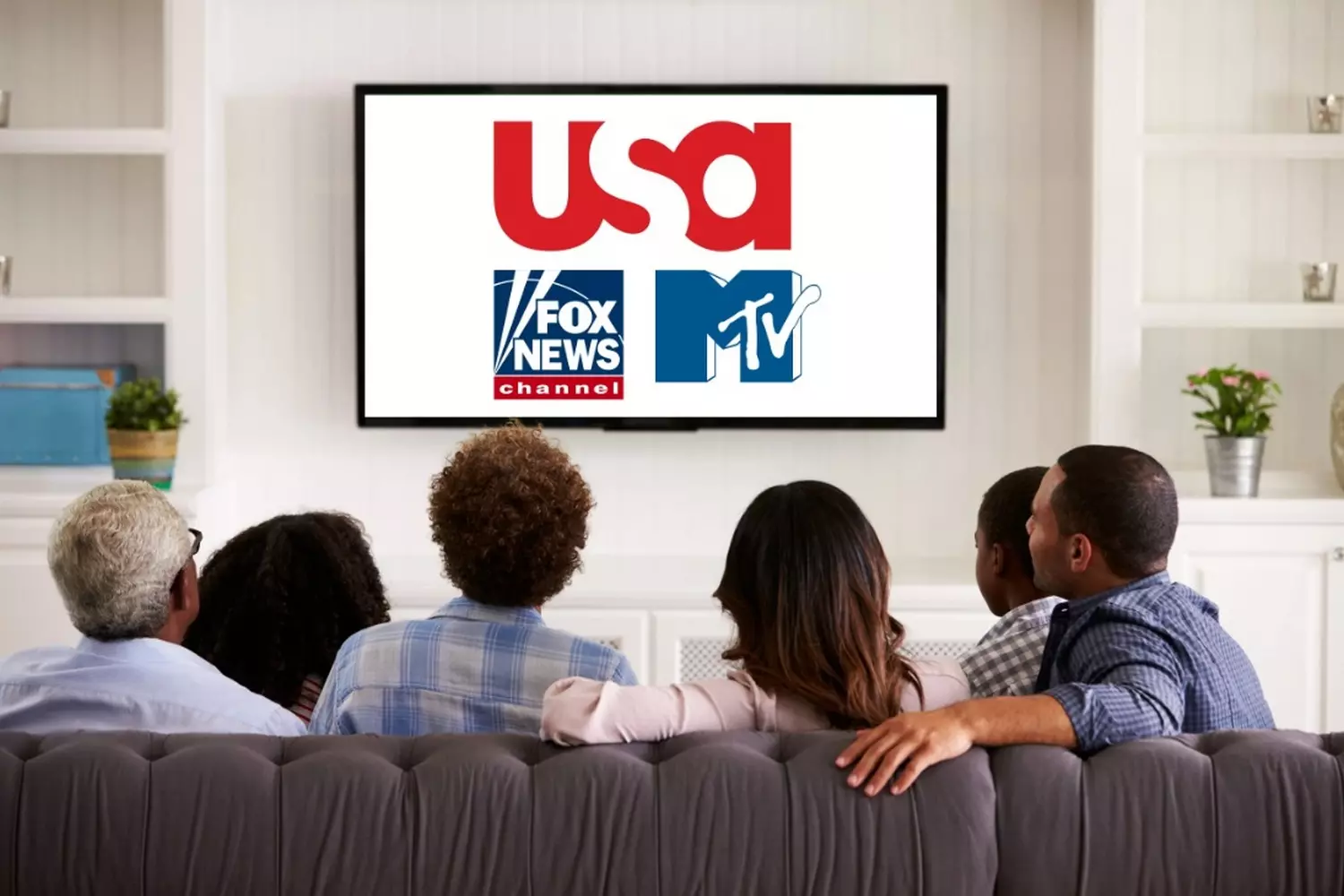
The Media as a Lens to America
If you want to understand what America lives by — start with its media. Listen to what they say on CNN, compare it with Fox News, read a column in the New York Times, and check out the Twitter of a local newspaper from Ohio. This is exactly how you can feel the pulse of the country.
American Butler offers unique cultural tours across the USA, including visits to editorial offices, media museums, and TV studios. We will show you America not through the tourist’s lens, but through the eyes of an editor, cameraman, and journalist.
Want to see behind the scenes of American news?














